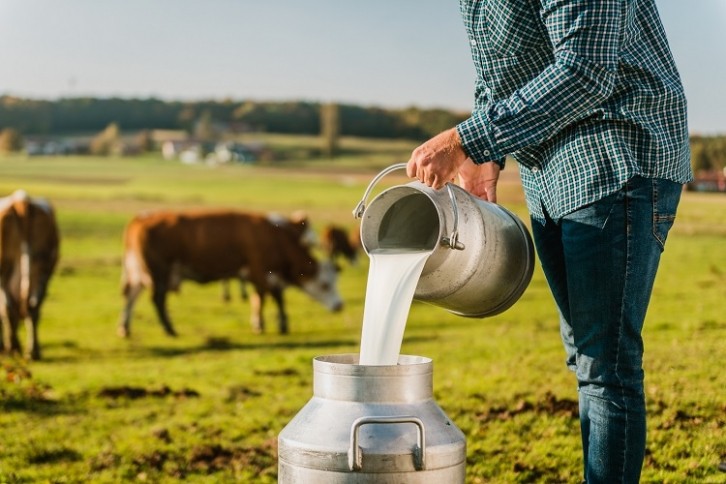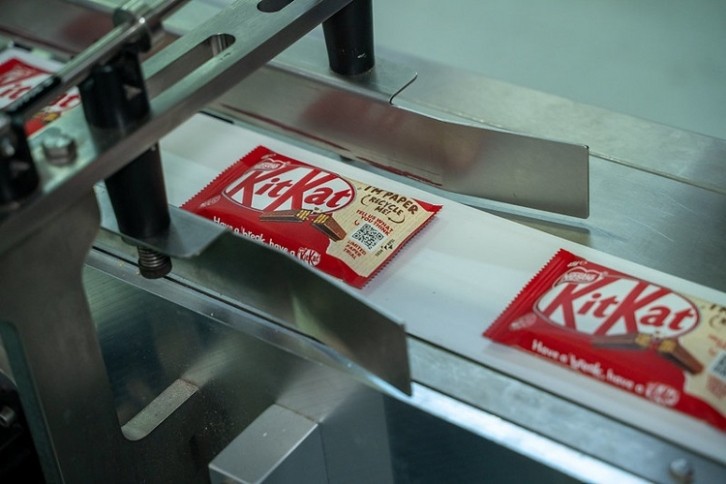‘Regenerative agriculture’ has become a bit of a buzz term within the food industry. While it promises a lot (and is beginning to deliver), regenerative agriculture also faces challenges.
For starters, without an official definition, what does regenerative agriculture actually mean? Implementing sustainable practices also doesn’t come cheap, so who pays? And finally, how can such a complex concept be effectively communicated to consumers?
In the UK, Nestlé is sowing regenerative agriculture into dairy via a partnership with farmer-owned dairy cooperative First Milk. Based in Scotland’s Ayrshire and England’s Cumbria, First Milk has worked with the FMCG major for over a decade. With Nestlé being First Milk’s largest raw milk customer, the duo is working together to overcome these challenges.
What does regenerative dairy mean for Nestlé?
Nestlé uses a lot of dairy. In the UK alone, the FMCG major accounts for around 1% of total fresh milk supply, which it uses in its confectionery products and hot beverages. All this fresh milk – millions of litres of it – comes from First Milk to Nestlé’s sites in Girvan, Scotland and Dalston, England.
The Nestlé Milk Plan, developed in partnership with First Milk, was developed to deliver environmental, social and economic benefits to the farmers, to Nestlé, and to society. Regenerative agriculture is embedded in the Nestlé Milk Plan.
The most obvious way that farmers benefit is via a ‘sustainability bonus’ awarded by Nestlé. Every farmer that takes practical measures to protect and enhance the natural assets on their land can claim the bonus.
As to what these measures entail, there is no ‘set menu’, according to Matt Ryan, regeneration lead at Nestlé UK and Ireland. “Farmers need to have agency to make their own decisions about practices they choose to implement. Every farm is different, every farmer’s appetite for change and risk is different.”
Although there is no ‘set menu’ for Nestlé Milk Plan practices, Nestlé has listed four compulsory practices its dairy farmers must implement in the UK:
- Optimise carbon storage within soil and fertiliser use to offset carbon in the supply chain;
- Increase the biodiversity of farmland;
- Follow Responsible Use of Medicines in Agriculture guidelines for antibiotics; and
- Reduce single-use and increase recycled plastics, exploring alternatives.
In saying that, Nestlé encourages uptake of several commonly cited regenerative agricultural practices. These include reduced or no-till farming, cover cropping, composting, increasing crop diversity, animal integration, managed grazing, and agroforestry.
Improving soil health is a big one for the FMCG major. “Soil is nexus of regenerative agriculture, and as soil health improves, we expect to see other benefits such as more carbon storage, improved water holding capacity and greater natural fertility,” Ryan told FoodNavigator.

As to the social and community dimension, the sustainability expert wants this to be a more prominent element of the regenerative agriculture agenda. “The Plan does a lot to support the next generation of farmers and works with schools to help them understand more about where their food is coming from.”
How can regenerative agriculture best be communicated to consumers?
Communicating sustainability is a challenge for industry across the board. But when the sustainability initiative in question is as complex as regenerative agriculture – something with multiple components and no official definition – the task is even harder.
Defining regenerative agriculture
Although no legal definition of ‘regenerative agriculture’ exists at the EU level, the Sustainable Agriculture Initiative (SAI) Platform has developed its own definition. FMCG companies Danone, PepsiCo, Nestlé, Unilever and others, were consulted.
SAI Platform defines regenerative agriculture as an outcome-based farming approach that protects and improves soil health, biodiversity, climate, and water resources while supporting farming business development.
Regenerative agriculture represents a subset of topics, but is not a replacement for sustainable agriculture, according to Domink Klauser, director of regenerative agriculture at SAI Platform. Rather, it is a component with a specific focus on the natural environment.
The lack of official definition presents a particular challenge, according to Nestlé. “The lack of a precise, universal definition for regenerative agriculture can make it difficult to communicate to consumers.
“The challenge is to encapsulate all of the different elements into one clear message to consumers – and then to find effective ways of getting that message across.”
And this challenge is not unique to Nestlé. Just this week, Danone told us it’s communicating environmental benefits associated with particular brands through social media and via its website instead of on-pack. In this way, the company has more space and time to explain what can be complicated dairy-related practices.

Nestlé also backs the off-pack approach. “One of the best ways to communicate a positive story about regenerative agriculture is to show, not tell – to let consumers see the tangible benefits within their local communities,” Ryan told this publication.
To communicate the work its doing with farmers as part of the Nestlé Milk Plan, the company is working with relevant brands Nescafé, KitKat, Aero and Quality Street. “We’re created a number of videos featuring the farmers explaining where the milk comes from, why regenerative farming is important, and what practices they are adopting to help improve the environmental benefits.
“We also need to clearly communicate to consumers what action they can take to make a difference themselves,” believes Ryan.
“We should be demonstrating to them that, by purchasing their favourite brands from businesses that are committed to regenerative agriculture, they are helping to drive progress at scale.”
Regenerative agriculture beyond dairy
Regenerative agriculture is best known for its implementation outside of dairy, in crop cultivation, where research suggest using soil-friendly practices make for crops with healthier nutritional profiles.
What evidence exists that regenerative agriculture works?
Researcher-led findings aside, food makers are also keen to assess the efficacy of regenerative agriculture projects. Unilever recently shared environmental impact results from its first set of regenerative agriculture projects in Spain, Italy and the US – reporting benefits for food resilience and environmental sustainability.
Nestlé has experience in regenerative agriculture for crops as well as dairy. The food major helped instigate a pilot project in northern France – where it sources potatoes, wheat and sugar – to boost soil health, and has invested in regenerative agriculture projects in eastern England.
Focusing specifically on wheat, Nestlé Cereals launched the Nestlé Wheat Plan to support UK famers adopt regenerative agricultural practices. When the initiative was announced in 2022, Nestlé committed to including the Nestlé Wheat Plan on its Shredded Wheat packaging for a nationwide roll out. The back-of-pack carries displays ‘better farming, better countryside’ and directs consumers to the Nestlé Cereals website to find out more.
A spokesperson for the company said he was ‘delighted’ to tell consumers about the programme.
